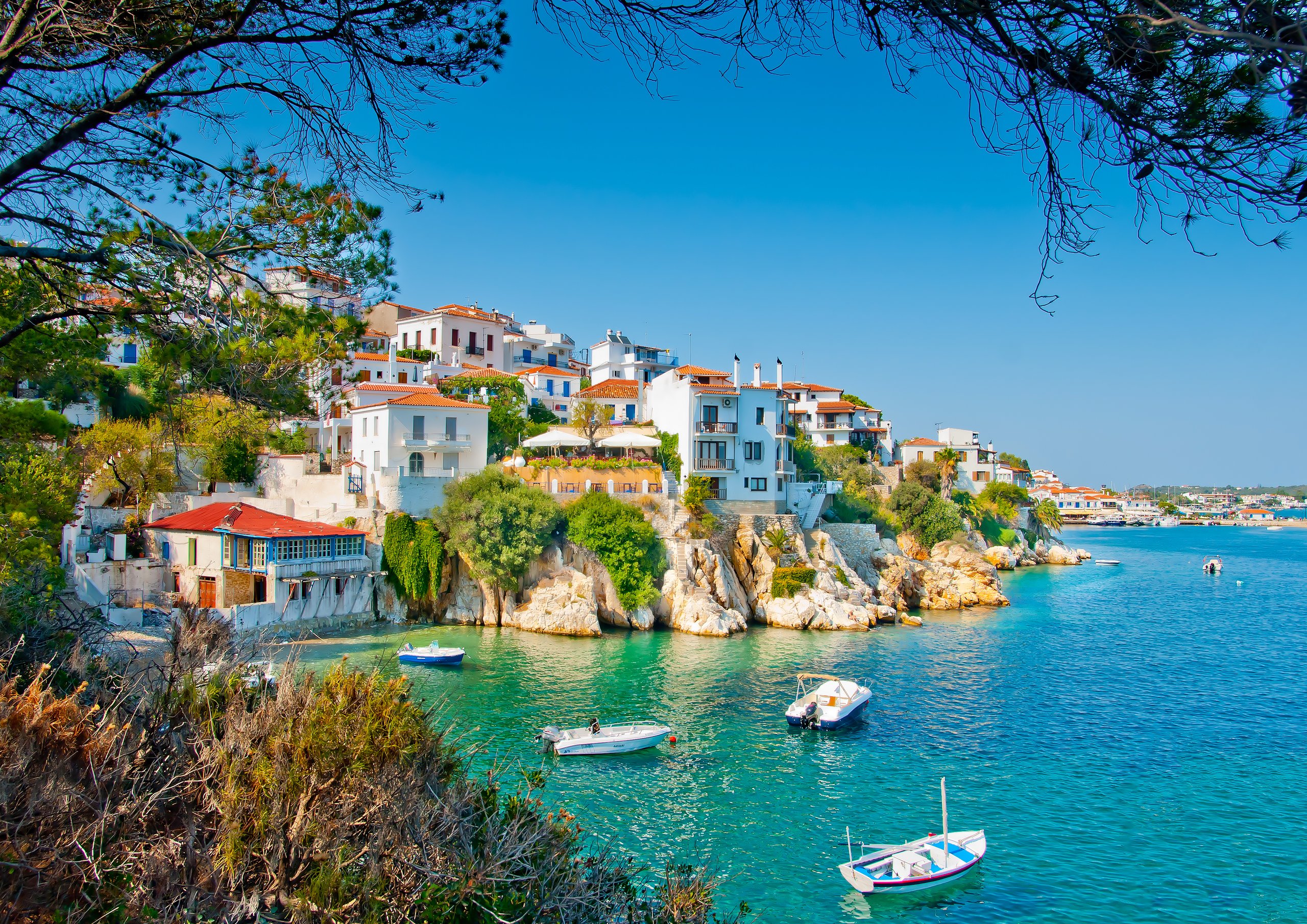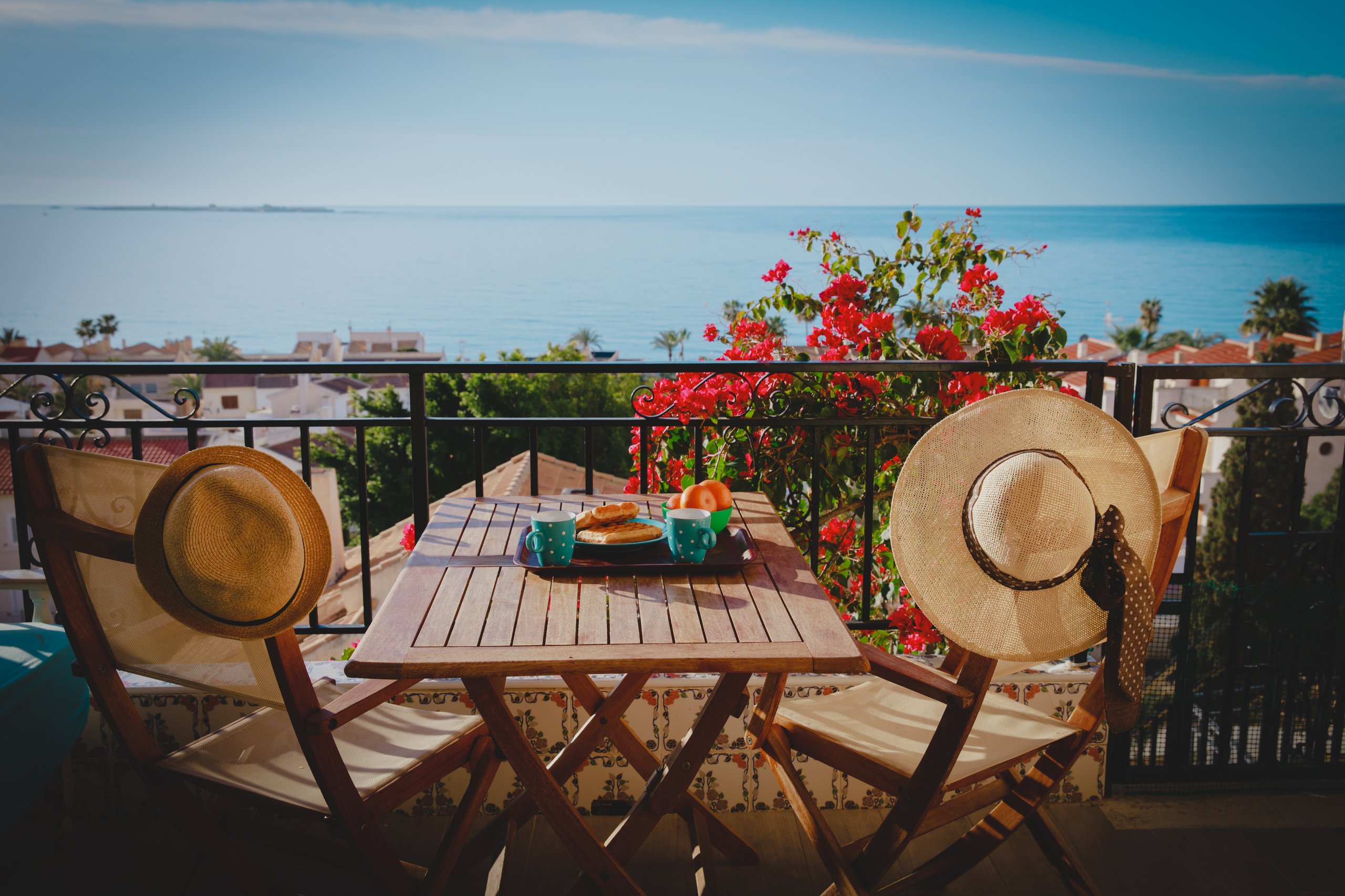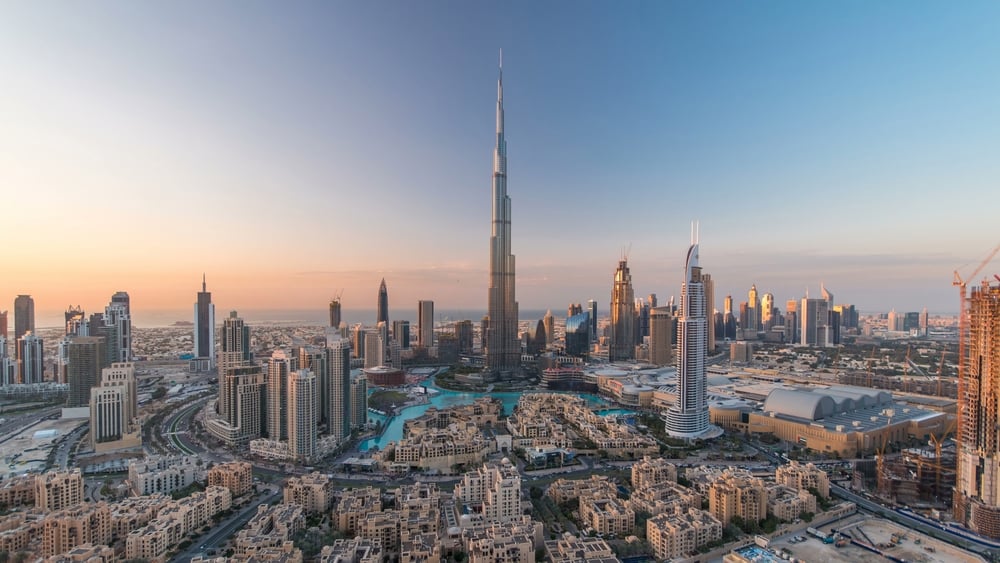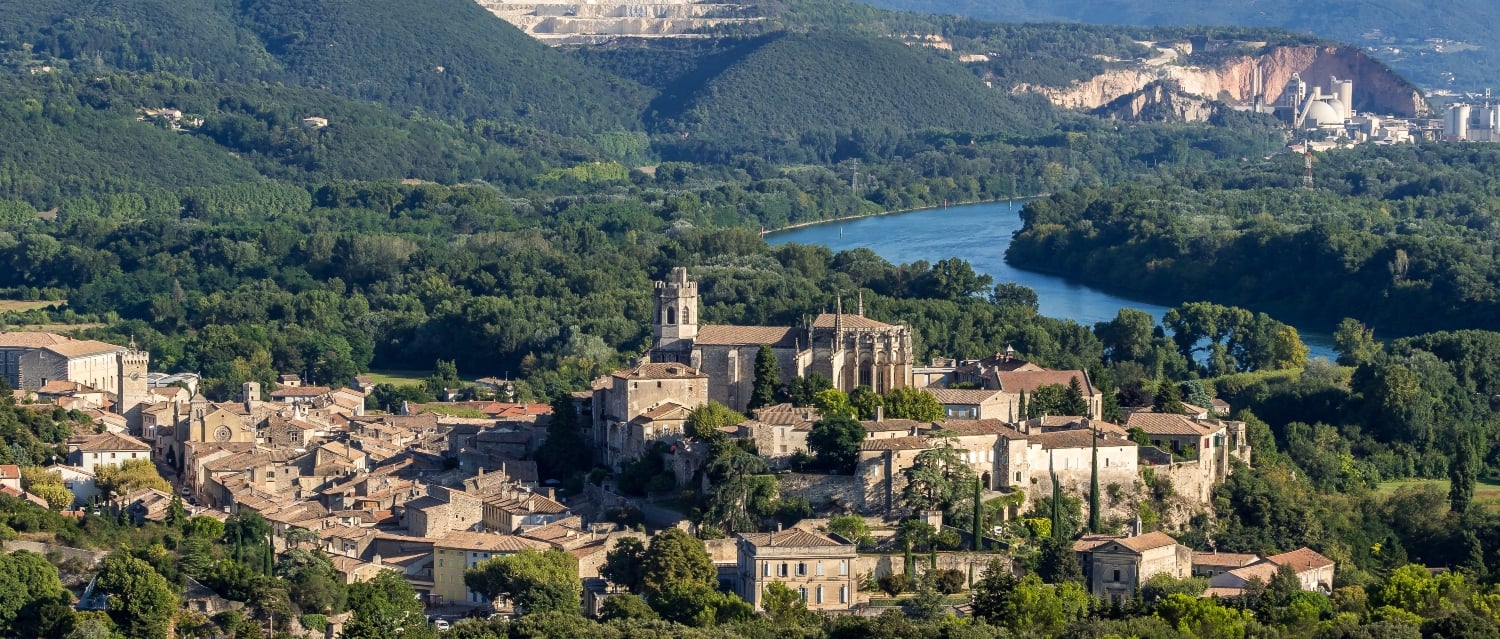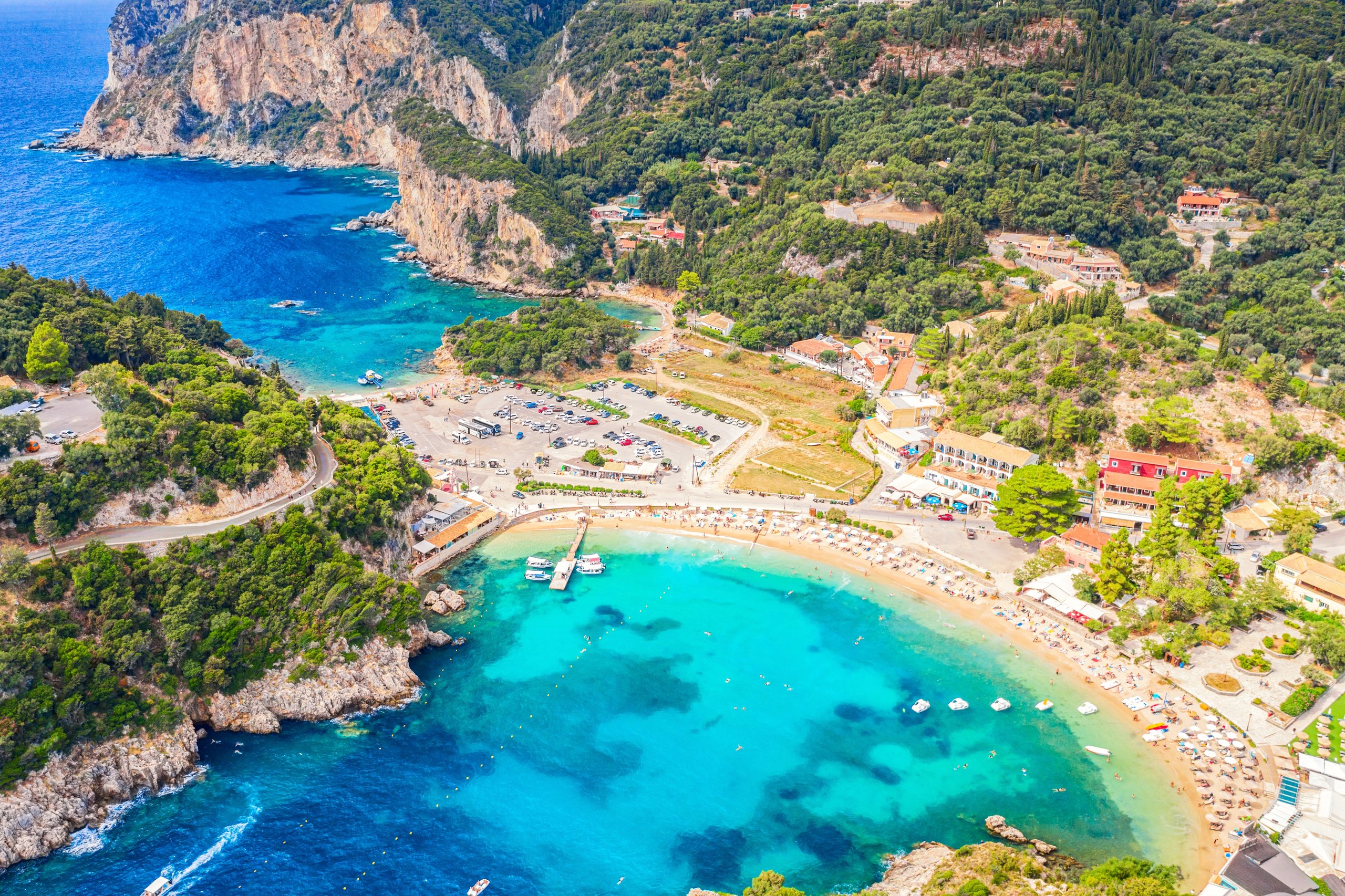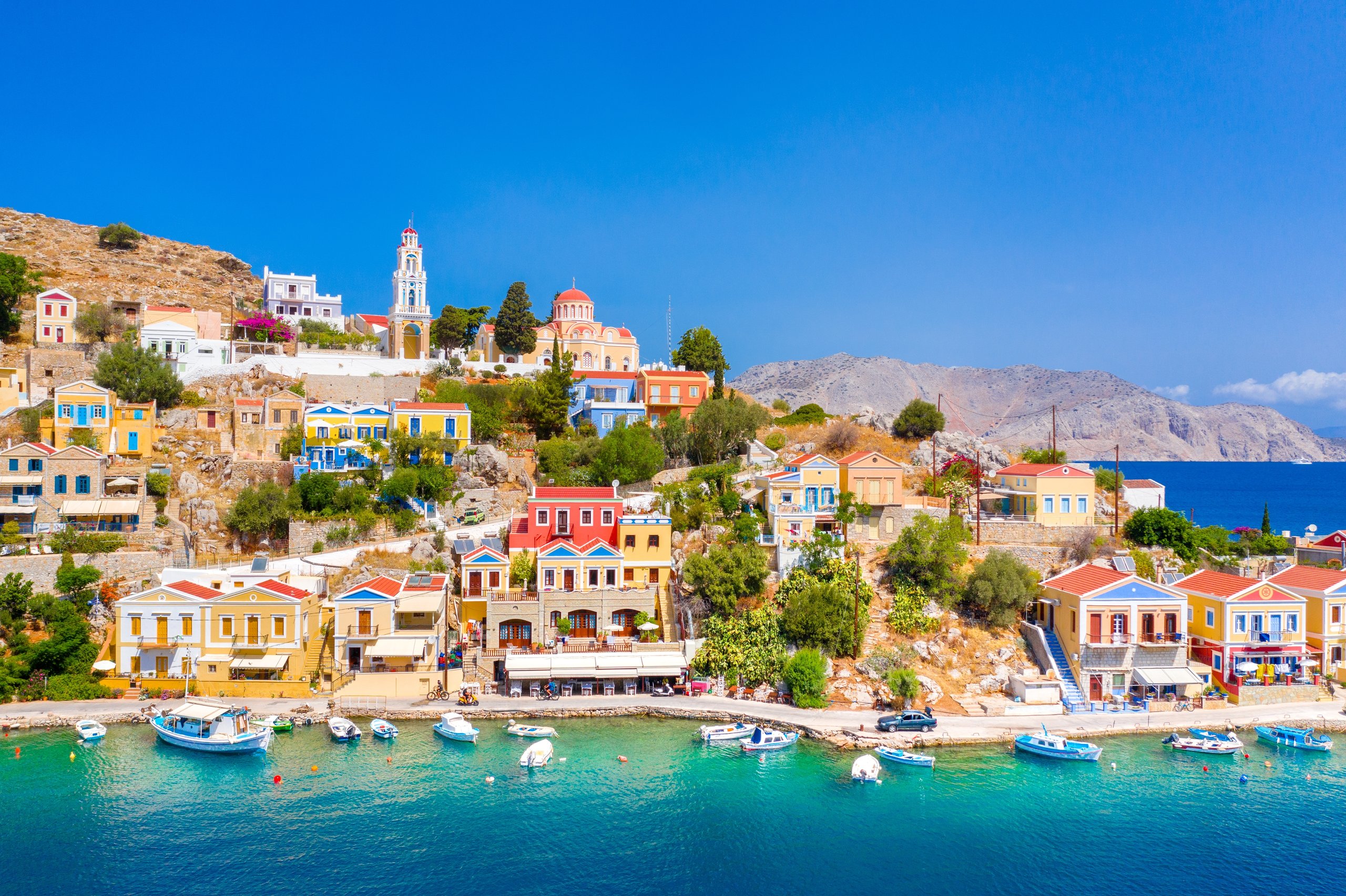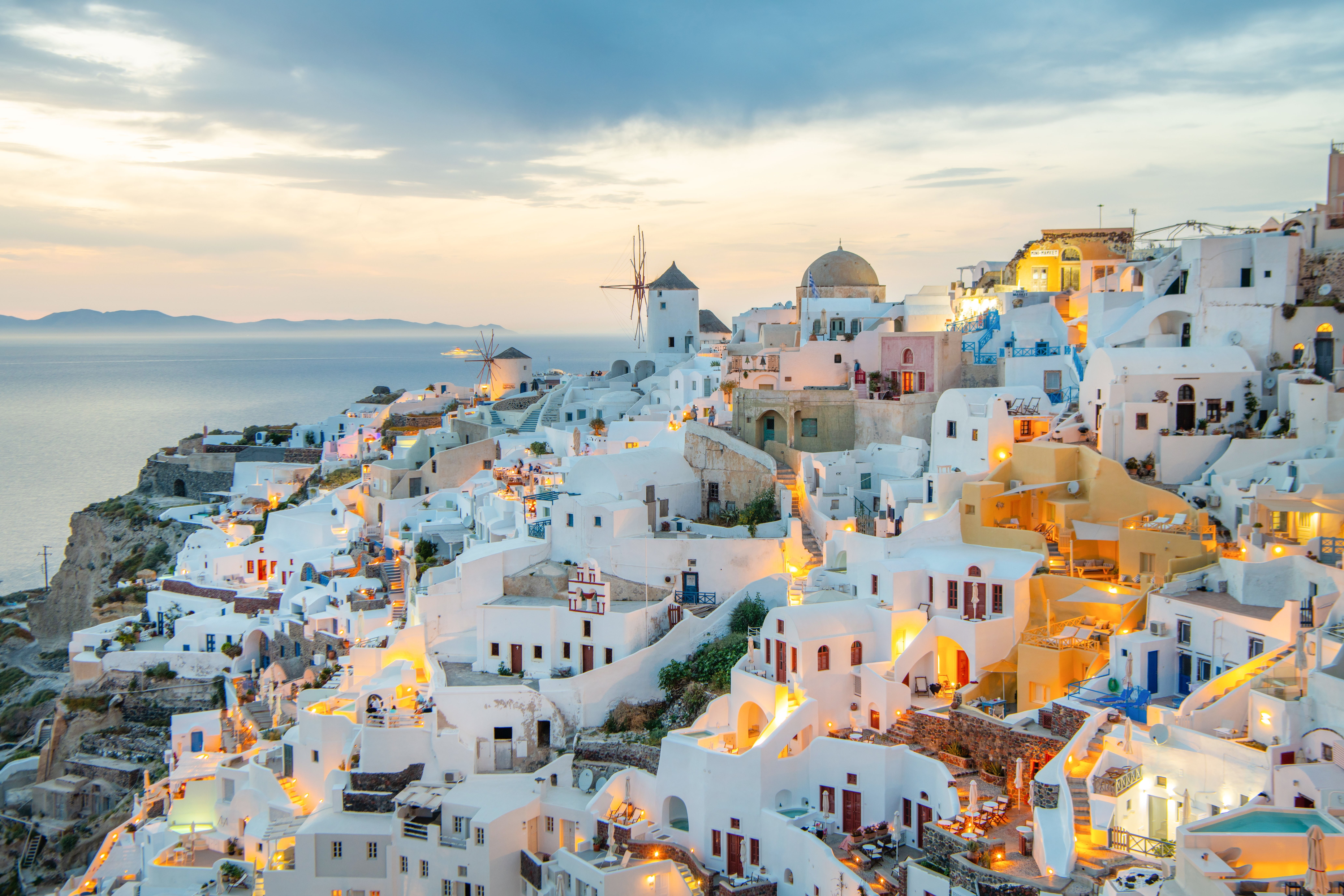Ardèche may be one of France’s best-kept secrets, but for those who make the journey, it offers one of the most scenic and authentic lifestyles in the country. Nestled in the southeastern corner of Auvergne-Rhône-Alpes, this ruggedly beautiful department is known for its untouched countryside, heritage villages and striking natural landmarks like the Gorges de l’Ardèche and the Pont d’Arc.
While the region lacks a TGV train line and requires a bit more effort to reach – typically via Valence or Lyon – that’s part of its charm. With no crowds and no overdevelopment, Ardèche remains one of the few places in southern France where you can still enjoy space, nature and quiet for an affordable price.
The landscape is shaped by forested hills, limestone cliffs and rivers carving their way through deep valleys. It’s an ideal destination for nature lovers, hikers, and those seeking a slower, more grounded way of life. And while tourism centres like Vallon-Pont-d’Arc attract visitors in summer, the rest of the department remains largely unchanged – a place of real character and enduring community spirit.
If you’re looking beyond the mainstream areas like Provence or the Côte d’Azur, buying property in Ardèche offers a unique opportunity to reconnect with nature, history and tradition. To start exploring homes in this quiet corner of France, visit our full selection of property for sale in Ardèche or browse homes across France to compare options.
Table of contents
- Why you should be buying property in Ardèche
- Property types and what you can get for your money
- Popular towns and villages to explore when buying property in Ardèche
- Must-see natural attractions after buying property in Ardèche
- How to buy property in Ardèche
- Ownership costs and ongoing expenses
- Frequently asked questions

Why you should be buying property in Ardèche
If you’re seeking space, scenery and a more traditional way of life, Ardèche delivers all three – often at a fraction of the cost of more famous French regions. Tucked away in the Auvergne-Rhône-Alpes, this department is often overlooked by overseas buyers, but its appeal lies precisely in its authenticity and affordability.
Unlike Provence or the Côte d’Azur, the Ardèche remains largely untouched by mass tourism or large-scale development. You’ll find small towns, winding river valleys and stone-built villages that have changed little in centuries. The pace of life is slower, the air is cleaner, and the landscape is shaped more by nature than by infrastructure.
While it’s true that Ardèche doesn’t have a high-speed train line or a local airport, many buyers see this as a benefit. The lack of over-tourism means more space, better value, and a deeper sense of community. And with regular buses from Valence and Lyon just two hours away, it’s more accessible than you might think – especially if you’re planning longer stays or a permanent move.
The region also offers strong year-round appeal. In summer, hiking, wild swimming and cycling are everyday pleasures. In autumn, chestnut festivals fill the towns with local food and music. Even in winter, the scenery retains its rugged charm – and homes with wood burners and thick stone walls feel especially cosy.
If you’re looking for a rural lifestyle that’s rooted in nature and tradition, Ardèche offers one of the most compelling opportunities in France. To explore how the buying process works, start with our full guide on how to buy property in France, or continue reading below to discover the types of homes you’ll find here.
For a closer look at the purchase process, claim your free copy of France Buying Guide:
Download the France Buying Guide
Property types and what you can get for your money
Ardèche is one of the last places in southern France where you can still find character homes with land for under €150,000 – sometimes significantly less. Detached stone houses dominate the market here, many of them dating back to the 18th and 19th centuries, with rustic façades, wooden shutters and panoramic views over valleys or forested hills.
Three-bedroom family homes with outdoor space can start from around €120,000 in quieter areas. Even in more well-known locations such as Aubenas or Les Vans, prices remain far below those found in Provence or the Alps. If you’re happy to renovate, properties needing modernisation can be found for under €80,000 – making Ardèche an attractive option for hands-on buyers or anyone looking for a long-term project.
In smaller villages like Saint-Montan or Alba-la-Romaine, you’ll find carefully restored homes with thick stone walls, vaulted cellars and shaded courtyards. These make excellent holiday bases or seasonal rentals – particularly during the summer hiking and festival season.
Larger countryside homes (often with land and outbuildings) are also available, especially in more rural pockets near the Monts d’Ardèche Regional Natural Park. These properties are ideal for buyers planning to create a gîte, run a smallholding, or simply enjoy space and privacy. To explore income potential, see our full article on property investment in France.
If you’re just starting your search, you may want to explore our tips for finding a property in France, including how to shortlist locations, budget for repairs, and work with local estate agents.

Popular towns and villages to explore when buying property in Ardèche
What Ardèche lacks in fame, it makes up for in authenticity. This department is home to some of France’s most charming towns and villages – many of them officially recognised as “villages of character” by the local tourism board. For overseas buyers, this means the chance to own property in places that offer deep-rooted culture, natural beauty and long-term lifestyle value.
Privas is the administrative capital of Ardèche – and also France’s smallest prefecture. Set among rolling hills and rivers, it has a quiet, lived-in feel that’s especially appealing to buyers seeking year-round residency. The town comes to life during its chestnut festival each autumn and hosts a popular weekly market, making it a great base for exploring rural life.
Aubenas is one of the larger and better-connected towns in the south of the department. With its dramatic hilltop château, medieval streets and independent boutiques, it blends history with practicality. You’ll find restaurants, markets and good access to services – ideal if you want to enjoy village charm without giving up modern conveniences.
Alba-la-Romaine is a postcard-perfect village where 16th-century architecture meets Roman history. The old town is beautifully preserved, with cobbled lanes, stone balconies and peaceful squares lined with cafés. It’s a great option for buyers looking for a permanent home or long-stay base within a vibrant, heritage-rich community.
Les Vans sits near the southern edge of the Monts d’Ardèche Regional Natural Park and is popular with tourists in summer thanks to its shady squares, galleries and outdoor dining. But it retains its year-round appeal for buyers who value nature, hiking, and a lively cultural calendar. Properties here offer access to a wide range of outdoor pursuits – from wild swimming and climbing to horse riding and canyoning.
Saint-Montan is a remarkable case of restoration. Abandoned in the mid-20th century, it was brought back to life by thousands of volunteers in the 1970s, who rebuilt the stone houses using traditional methods. Today, it offers one of the most atmospheric village settings in Ardèche, with steep alleys, a hilltop castle and sweeping views of the Rhône Valley.
Many of these locations fall within easy reach of the Gorges de l’Ardèche and the wider regional park, making them ideal for nature lovers or anyone considering a rural retreat. If you’re still weighing up different areas in France, our guide to choosing the perfect French location can help clarify what kind of setting suits your goals.
Must-see natural attractions after buying property in Ardèche
Ardèche is one of the most naturally dramatic departments in France – and that’s a major part of its appeal to buyers. This is a region shaped by rivers, cliffs, forests and ancient geology, offering endless opportunities for outdoor living. Whether you’re moving full-time or seeking a base for active holidays, the local landscape becomes part of daily life.
The Gorges de l’Ardèche
Often called the “European Grand Canyon,” the Gorges de l’Ardèche is one of the department’s most iconic landmarks. This 32-kilometre limestone canyon stretches from Vallon-Pont-d’Arc to Saint-Martin-d’Ardèche, with towering cliffs, turquoise water and dense woodland along the way.
Adventurous buyers will find plenty to do – kayaking, canyoning and wild swimming are all popular in spring and summer. Canoe hire and guided tours are widely available, especially during the warmer months. If you prefer dry land, the scenic route along the northern rim offers panoramic views, picnic stops and signposted viewpoints. The natural stone arch at the Pont d’Arc is a must-see, and many homes in this part of Ardèche offer easy access to this extraordinary setting.
The Monts d’Ardèche Regional Natural Park
This vast protected area covers over 180,000 hectares of volcanic peaks, chestnut groves, river valleys and walking trails. It was created through local efforts in the 1990s to preserve traditional landscapes and rural life – and it’s now a key part of Ardèche’s identity.
Scattered throughout the park are “geosites” – points of geological or environmental interest. These range from extinct volcanoes and lava domes to dramatic escarpments and ancient terraces. For anyone with an interest in conservation, outdoor living or eco-tourism, this area offers not just stunning scenery but also long-term sustainability.
Many buyers choose to live near or within the park for easy access to hiking trails, fresh air and quiet. Several character villages sit just outside the park boundary, offering a balance of seclusion and services. For longer stays, the area has a good supply of guesthouses and gîtes – ideal if you want to trial the area before committing to a purchase.
Everyday life close to nature
Living in Ardèche means more than just proximity to beauty spots – it’s about being immersed in nature as part of your routine. From morning walks along the river to seasonal festivals celebrating chestnuts, lavender or wine, life here is shaped by the land.
If you’re considering a move to France to embrace a more outdoorsy lifestyle, Ardèche offers one of the most rewarding (and affordable) settings. To understand what kind of property you can expect to find here, continue on to Property types and prices, or browse our listings in Ardèche.

How to buy property in Ardèche
Buying a property in Ardèche follows the same legal process as anywhere else in France – but if you’re purchasing from abroad, it helps to understand the steps before you begin. Whether you’re relocating, investing or buying a second home, careful planning will help make your move as smooth as possible.
Start by identifying what matters most to you. Are you looking for a renovation project in a remote hamlet, or a lock-up-and-leave home near a lively market town? Do you need fast access to services or public transport? Once you’ve narrowed your priorities, you can begin speaking with estate agents and browsing Ardèche property listings.
The next step is to plan your viewing trip. In rural departments like Ardèche, properties are often vacant or used part-time, so viewings should be booked well in advance. If you’re unsure where to start, our Viewing Trip Guide explains how to organise your visit and what to look for on the ground.
Once you’ve found a property, the purchase begins with a preliminary contract – either a compromis de vente or promesse de vente. This agreement is legally binding after a 10-day cooling-off period and usually requires a deposit of 5–10% of the purchase price.
A notaire – a government-appointed legal official – oversees the sale and handles the paperwork. You can also appoint your own independent solicitor if you’d prefer someone to explain the process in English.
If you’re financing your purchase, it is possible to get a mortgage as a non-resident. Most banks require a 20–30% deposit, and approval depends on your income, credit history and currency. To navigate this part of the process, read our article on how to find a mortgage broker in France.
The full buying process typically takes two to three months, though it can be quicker if you’re buying in cash or already have financing in place. For a full breakdown of each stage – from viewing to completion – read our step-by-step guide to the French property buying process.
If you’re buying in euros from abroad, it’s also important to plan how you’ll transfer funds. Currency fluctuations and bank fees can have a major impact on your final cost. To avoid surprises, we recommend speaking with a currency specialist and reading our tips on how to save money when buying property in France.
Need tailored help? Speak with a property consultant for personalised advice on buying in Ardèche or other rural French regions.
Ownership costs and ongoing expenses
One of the biggest advantages of buying property in Ardèche is the affordability – not just in purchase price, but also in long-term ownership costs. Still, it’s essential to understand the typical expenses you’ll face once you’ve completed your purchase.
Annual property taxes in France are generally modest, especially in rural departments like Ardèche. You’ll likely need to budget for two key taxes:
- Taxe foncière: Paid annually by all property owners. Rates vary by commune but often remain below €1,000 per year for a standard home in Ardèche.
- Taxe d’habitation: This is now largely phased out for permanent residences, but still applies to second homes. Expect to pay more if your property is located in a high-demand tourist area.
To understand how these taxes are calculated and what affects them, refer to our full guide to understanding property taxes in France.
Utility bills in Ardèche are generally reasonable, but older stone properties may require more heating in winter. Many rural homes rely on oil or wood-burning stoves rather than mains gas. Electricity, water and waste charges vary depending on usage and property type.
Insurance is legally required and relatively inexpensive. Basic home and contents cover typically costs between €150 and €400 annually. If you plan to let the property short-term, you may need landlord or holiday rental coverage.
Maintenance and renovation costs can vary significantly. Homes in Ardèche often come with outbuildings, land or historic features that require periodic upkeep. If you’re planning repairs or upgrades, get local quotes during the viewing process. Our article on managing your French property includes advice on working with tradespeople and planning for upkeep year-round.
If you’ll be transferring money regularly – for mortgage payments, renovations or utility bills – currency planning is also important. Using a specialist provider rather than a bank can help you avoid high transfer fees and poor exchange rates. To explore your options, see our guide to making essential payments in France.
For a complete picture of what to expect, including buying fees and mortgage costs, visit our guide to the costs of buying property in France – including how they compare between new-builds and older homes.
Frequently asked questions
Yes. Ardèche is ideal for buyers seeking space, scenery and authenticity without the high prices of Provence or the Riviera. It’s perfect for outdoor lovers, retirees and those looking for a peaceful lifestyle close to nature.
Absolutely. France has no restrictions on foreign property ownership. Whether you’re from the UK, US, Canada or elsewhere, you’re free to purchase a home. Learn more in our guide: Can you buy property in France?
You can find village homes from around €100,000 and detached countryside houses with land from €120,000–€180,000. Renovation projects may cost less. Prices vary based on location, size and condition. See our section on Property types and prices for more detail.
In addition to the sale price, budget around 7–8% for notaire fees and taxes. You may also need to account for property tax, insurance, renovation costs and currency exchange fees. Read our guide to the costs of buying property in France for a full breakdown.
It’s more remote than other regions – there’s no local TGV line and the nearest airport is Lyon (about 2 hours away). However, buses run from Valence and driving is easy. Many buyers see its quiet location as part of its charm.

